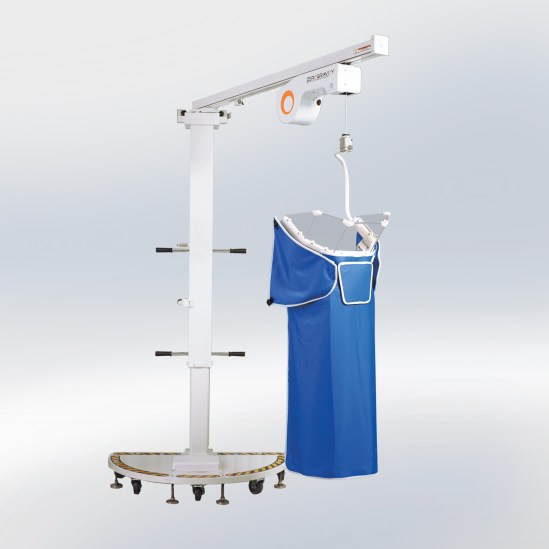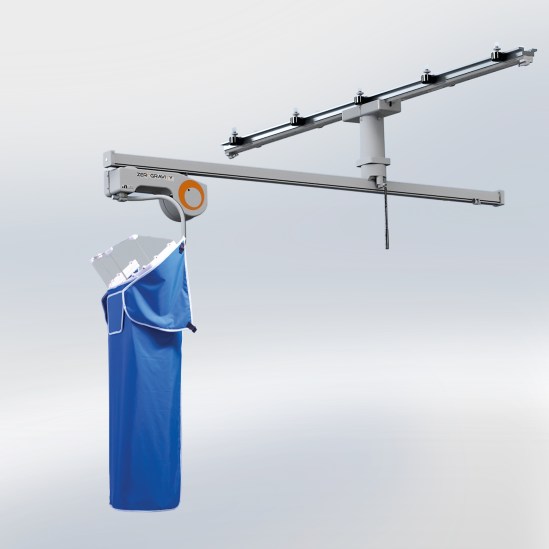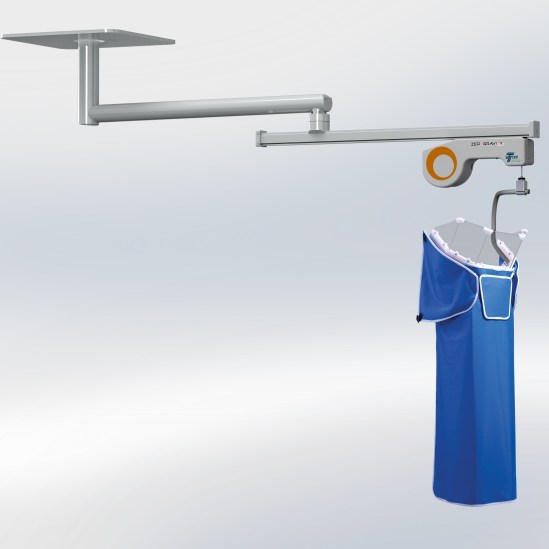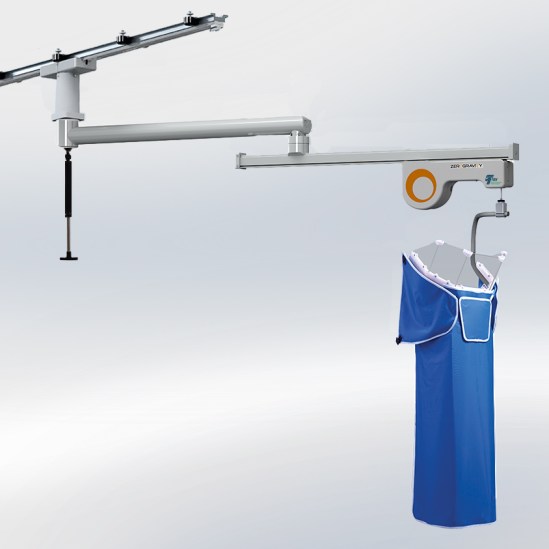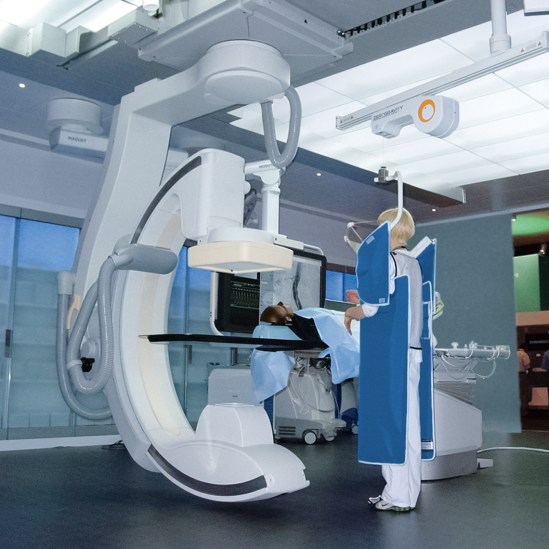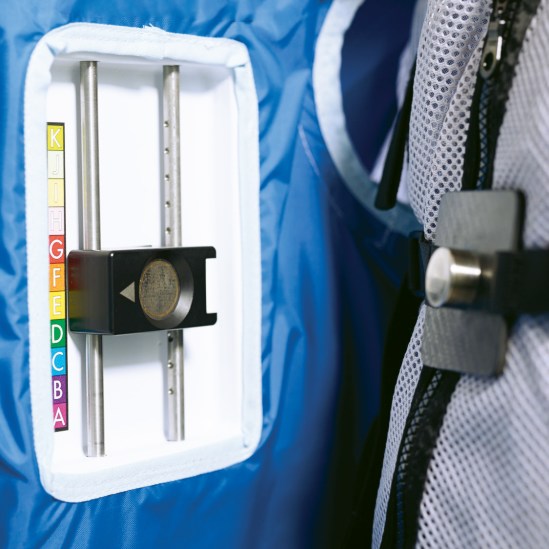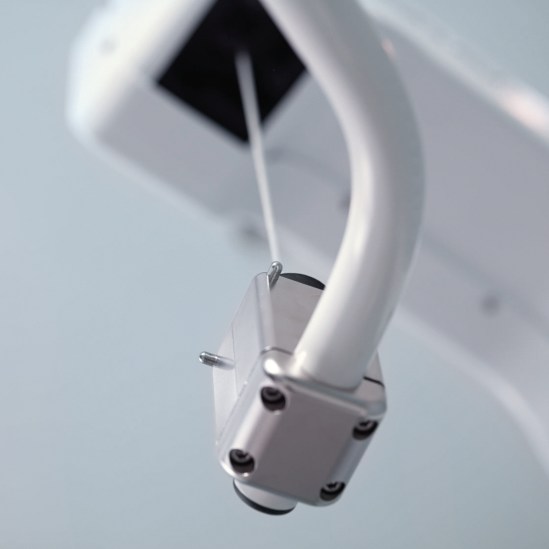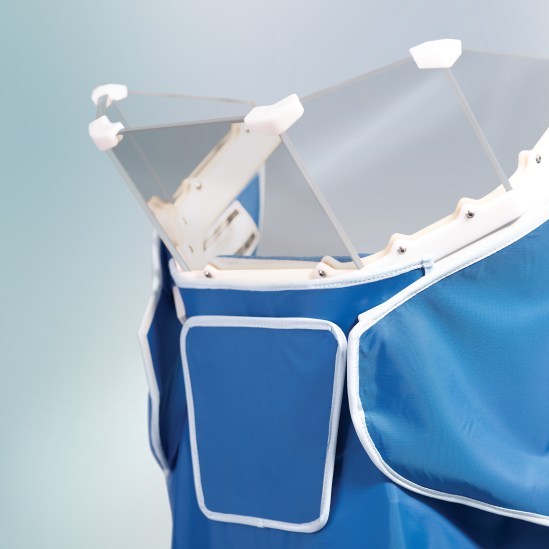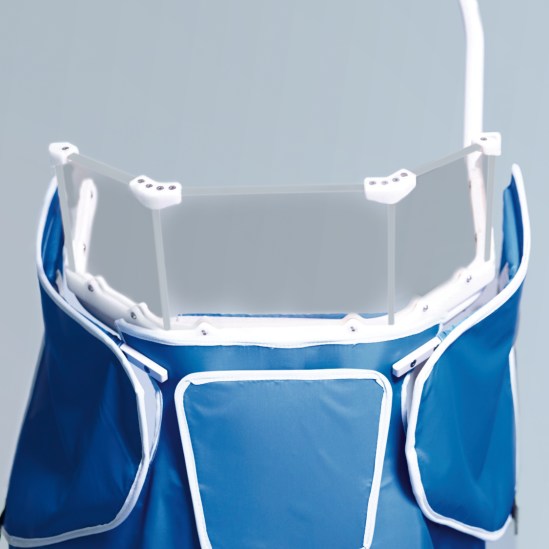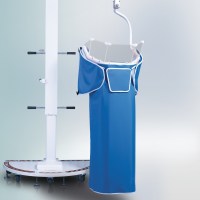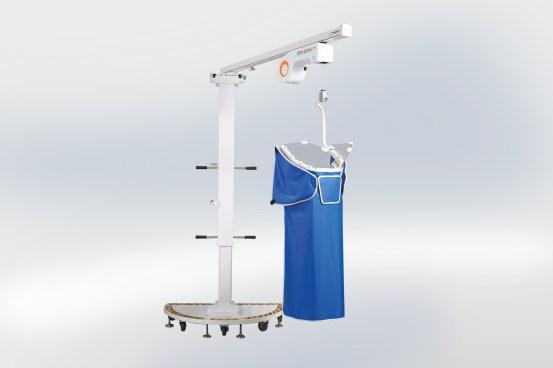
Floor Unit
The Floor Unit suspended body and face shield can be repositioned for a broad range of procedures and room configurations.
When not in use, the system can be easily stored to the side of a room.
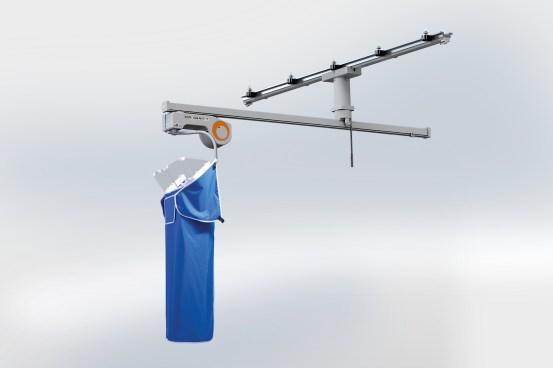
Monorail
Suspended from a ceiling-mounted rail, the Monorail is perfect when floor space is scarce.
Offered in two boom arm lengths: the short boom provides patient access on one side of the table, while the longer boom provides access on both sides of the table (depending on the position of the rail).
Can be upgraded with an additional shield, enabling simultaneous use by two operators.
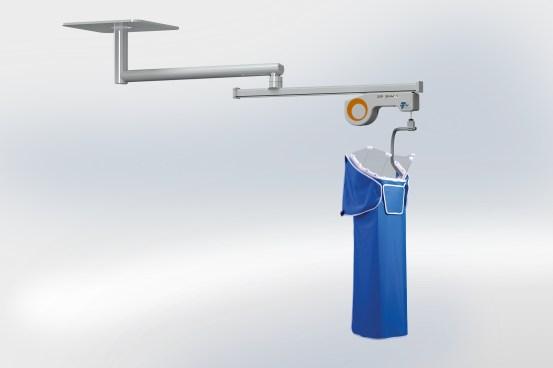
Hinged Swing Arm
The single fixation point of the Hinged Swing Arm system makes it the ideal choice when other ceiling mounted equipment prohibits the use of a rail.
Can be used on both sides of the table if there is a fixation point available near the center of the table.
The shield can be stowed when not been used, e.g., in hybrid rooms.
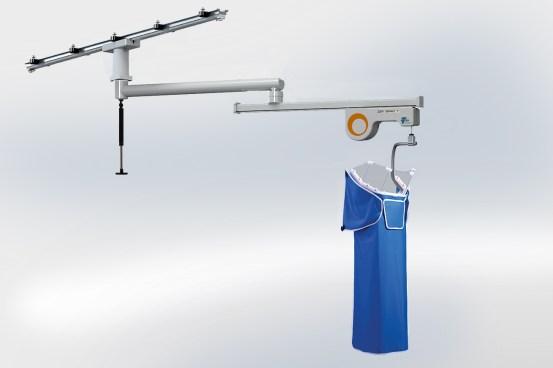
Monorail Hinged Swing Arm
This system combines the advantages of the Hinged Swing Arm and Monorail configurations, therefore providing the operator with maximum patient access.
The ceiling-mounted rail with a swing arm fixed to a trolley provides smooth access to both sides of the table.
Glides easily out of the way and can be stowed when not in use.
Product specification
- Zero-Gravity utilizes a suspended 1.0 mm lead body shield that engages magnetically to a vest worn by the operator. This allows Zero-Gravity to move in sync with the operator and easily be stowed out of the way when not needed. In addition, it employs a 0.5 mm lead equivalent acrylic face shield that protects the head, eyes and throat of the operator.
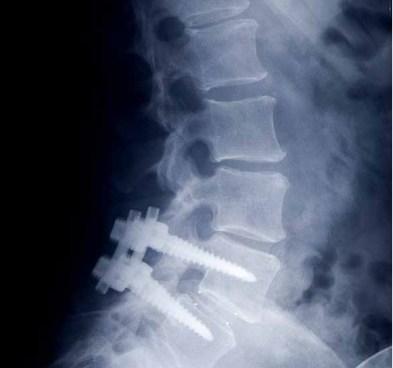
Orthopedic Protection
"Clinicians who often work with fluoroscopy are at risk of orthopedic strain resulting from the weight of personal protective apparel.2 Interventional cardiologists must wear lead aprons approximately four times longer than orthopedists or rheumatologists, and report significantly higher rates of neck or back pain, as well as missed days of work 3. Zero-Gravity takes the weight off clinicians' shoulders, so orthopedic strain will no longer limit their productivity."
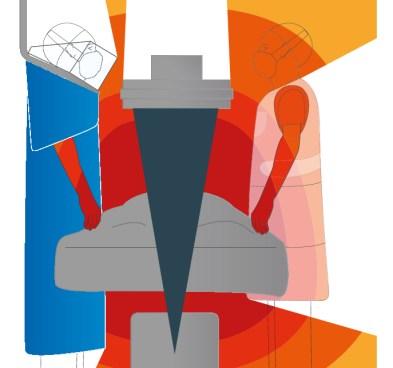
Radiation Protection
No matter how small, any dose of radiation has an associated risk of cancer, and this risk increases with greater exposure.2Zero-Gravity provides an 87-100% reduction in radiation exposure as compared with the combination of conventional lead aprons with table shields and movable shields.1
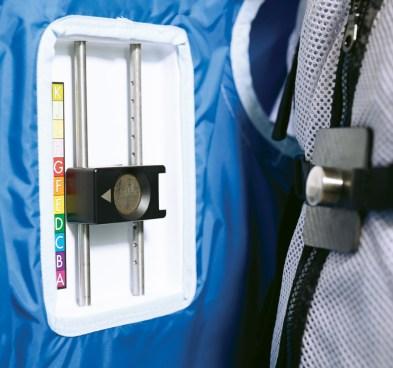
Ease of Use
The suspended body and face shield provides freedom of movement, and can be easily engaged or disengaged according to the usage of fluroscopy, all while maintaining sterility.
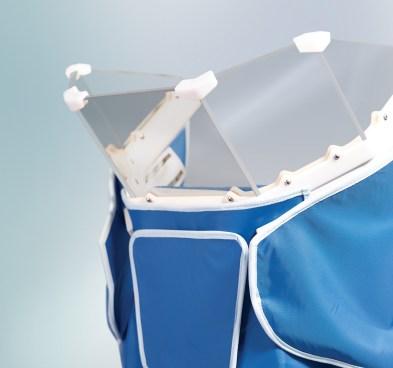
Flexibility
Zero-Gravity is offered in different configurations to adapt a broad range of procedures and room settings.
Media
Zero Gravity
Video showing the benefits and simplicity of the device.
Zero Gravity
Video showing the benefits and simplicity of the device.
Zero Gravity
Video showing the benefits and simplicity of the device.
Evaluation of a Suspended Personal Radiation Protection System vs. Conventional Apron and Shields in Clinical Interventional Procedures (Savage C, Seale IV TM, Shaw CJ et al. 2013)
- This clinical study compares conventional lead aprons and ancillary shields to a functionally weightless personal overhead-supported system with expanded coverage.
- It was concluded that compared to conventional lead aprons with shields, the suspended system provided superior operator protection during interventional fluoroscopy, allowing operators to perform procedures without potentially obstructive shields.
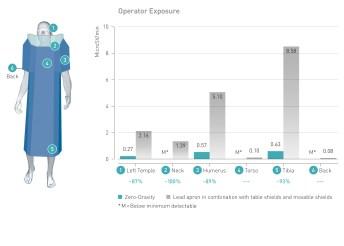
Prevalence of spinal disc disease among interventional cardiologists (Ross A, Segal J, Borenstein D et al. 1997)
- A suspected, but undocumented, excess of axial skeletal disease among interventional cardiologists (possibly a consequence of lead apron use) was investigated by comparing questionnaire responses from cardiologists, orthopedic surgeons, and rheumatologists (n = 714).
- Cardiologists reported more neck and back pain, more subsequent time lost from work, and a higher incidence of cervical disc herniations, as well as multiple level disc disease (all p

Brain and Neck Tumors Among Physicians Performing Interventional Procedures (Roguin A et al., Am J Cardiol 2013;111:1368-1372)
- The report documented brain and neck tumors occurring in 31 physicians, with the malignancy on their left side in 85% of the cases. Given that the brain is relatively unprotected and the left side of the head is known to be more exposed to radiation than the right, these findings of disproportionate reports of leftsided tumors suggest the possibility of a causal relation to occupational radiation exposure.
Occupational Health Hazards of Interventional Cardiologists in the Current Decade: Results of the 2014 SCAI Membership Survey
- The SCAI survey (Society for Cardiovascular Angiography and Interventions) reveals that 49% of interventional cardiologists have suffered one or more orthopedic injuries as a direct result of their work in the cath lab with 7% having to limit the number of procedures they perform due to radiation exposure and 9% taking a health-related leave of absence.
1 Savage C, Seale IV TM, Shaw CJ et al. (2013) Evaluation of a Suspended Personal Radiation Protection System vs. Conventional Apron and Shields in Clinical Interventional Procedures, Open Journal of Radiology
2 Lloyd W. Klein, Donald L. Miller, Stephen Balter, Warren Laskey, David Haines, Alexander Norbash, Matthew A. Mauro, James A. Goldstein, Occupational Health Hazards in the Interventional Laboratory: Time for a Safer Environment, Radiology, Feb. 2009, Vol. 250, No. 2:538–544, doi:10.1148/radiol.2502082558
3 Ross A, Segal J, Borenstein D et al. (1997) Prevalence of spinal disc disease among interventional cardiologists, American Journal of Cardiology, Volume 79, p. 68–70.

